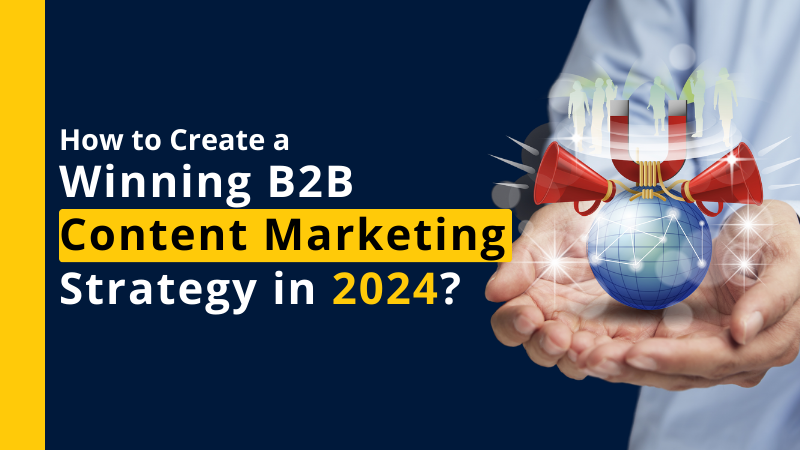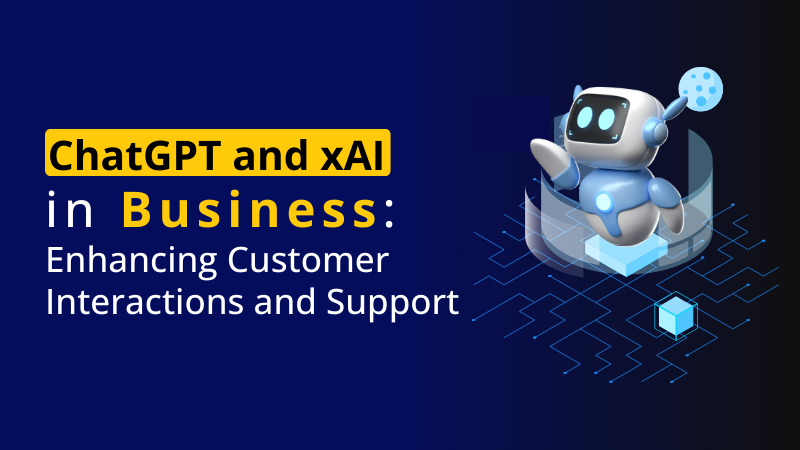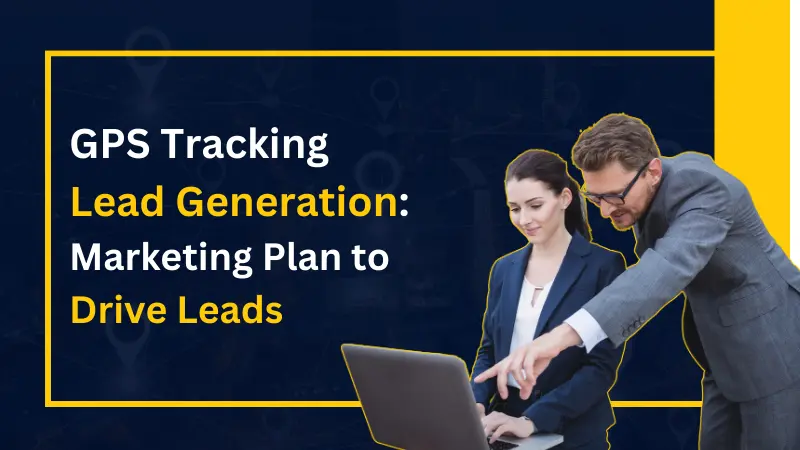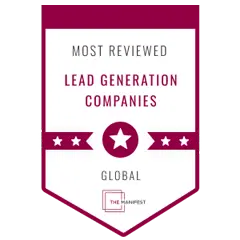Shall we pick up where we left off?
In our previous blog, we discussed different ways how you can reach out to C-level executives. If this is news to you, you can check out “How to Reach C-Level Decision Makers and Boost B2B Sales” to learn:
- What are C-Level Executives?
- How to Identify and Qualify B2B Decision Makers?
- Guide to Connecting with C-level Executives
- Effective Strategies to Engage Decision Makers
Now, in this article, we’ll be covering how you can win C-level executives in the B2B industry.
Selling to C-level decision-makers can be challenging, but it can also be highly rewarding. These executives are looking for solutions that can help them achieve their goals and drive growth for their companies.
To boost B2B sales and sell effectively to them, you need to build trust and credibility, demonstrate value and ROI, and take a consultative approach. But how?
How to build trust and credibility with C-level executives?
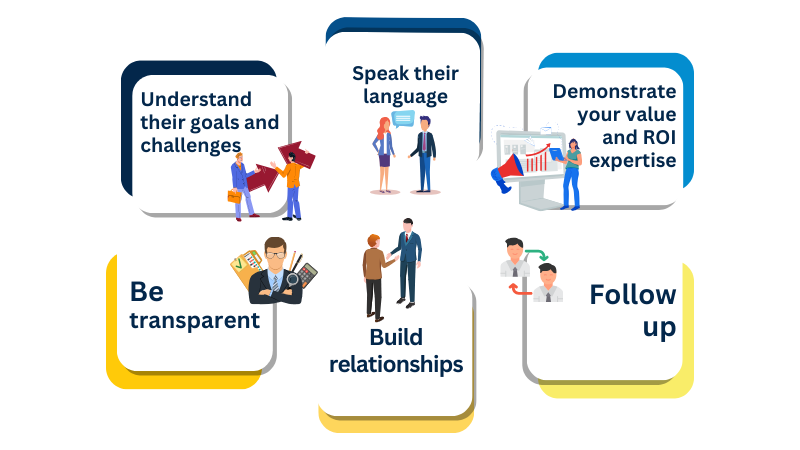
C-level executives are busy individuals who are bombarded with sales pitches every day. To stand out, you need to build trust and credibility with your contacts. This requires a strategic approach that considers their unique perspectives, priorities, and communication styles. Here are some strategies that can help you establish yourself as a trustworthy and credible professional:
- Understand their goals and challenges: Before approaching C-level executives, take the time to research their company, industry, and the challenges they face. By understanding their priorities and challenges, you can tailor your approach to demonstrate how your solutions can help them achieve their goals.
- Speak their language: C-level executives are often focused on the big picture and want to know how your solutions can impact their business outcomes. Avoid technical jargon and use language that resonates with their goals and priorities.
- Build relationships: Building relationships with C-level executives takes time and effort. Attend industry events, network with their peers, and engage with them on social media to establish a rapport.
- Be transparent: C-level executives appreciate honesty and transparency. Be upfront about any limitations or challenges your solutions may have and focus on how you can work together to overcome them.
- Demonstrate your value and ROI expertise: C-level executives want to work with experts in their field. So make sure to showcase your knowledge by sharing case studies/success stories, industry insights, testimonials, and data-driven metrics. This will help you demonstrate the tangible benefits of your product or service.
- Follow up: Follow up promptly and professionally after meeting with C-level executives. Provide additional information and resources that demonstrate your value and commitment to their success.
Why it is important to use a consultative approach to selling
As we previously discussed, selling to C-level decision-makers poses unique challenges and opportunities for B2B sales teams. One key strategy that can help you overcome these challenges is to use a consultative approach to selling.
Wait, what is consultative selling? How does it differ from traditional selling?
A consultative approach means putting your prospect’s needs first and helping them find the best solution to their problems. Instead of simply pitching your product or service, you become a trusted advisor who provides valuable insights and guidance. This approach involves understanding the unique context of each prospect, delivering content that speaks directly to their needs, and building strong relationships with key contacts.
Check this out to learn the difference between consultative selling and traditional selling:
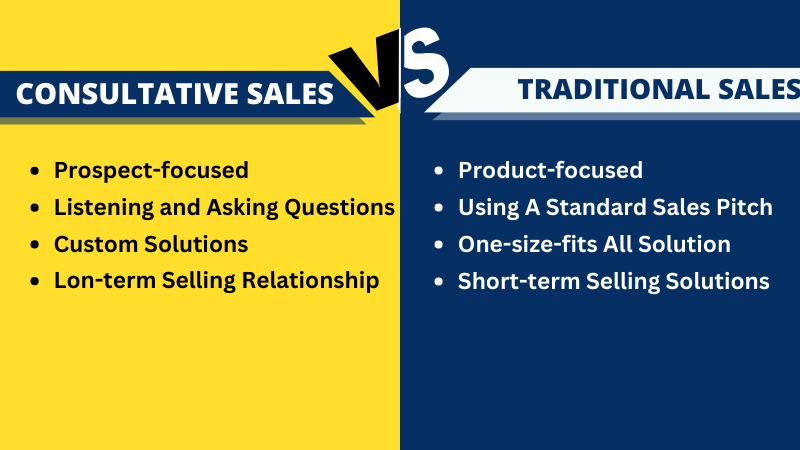
Now, let’s discuss the steps and the 3C’s of selling to the C-Suite to close large deals.
Before you go further to the 3C’s, here are the steps of consultative selling you can take note of:
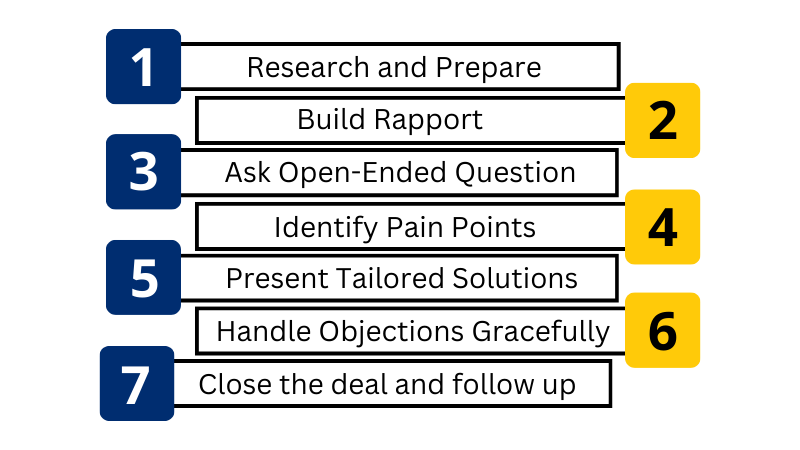
Context: understanding the unique needs of each prospect.
The first step in a consultative selling approach is to understand the unique context of each prospect. This means doing your research on the company, the industry, and the executives you are targeting.
- What are their pain points?
- What are their goals?
- What are the current trends and challenges in their industry?
By understanding the specific challenges that each prospect faces, you can position your product or service as the ideal solution. This requires a deep understanding of the executive’s industry and the trends that are shaping it. The more you know, the better equipped you will be to offer solutions that truly meet their needs.
Content: delivering value through customized messaging.
Once you have a solid understanding of your client’s context, it’s time to focus on content. This means creating a tailored pitch that speaks directly to their needs and concerns.
But instead of simply pitching your product, you need to offer relevant insights and thought leadership that demonstrate your expertise and add value for the client. This can include sharing case studies, white papers, or industry reports that showcase your understanding of their challenges and your ability to provide effective solutions.
Effective content should be concise, compelling, and targeted. It should speak directly to the prospect’s challenges and goals and provide actionable insights that demonstrate your expertise.
Contact: building strong relationships with key contacts.
Lastly, a consultative approach to selling requires building strong relationships with key contacts—C-suite executives. This means developing a deep understanding of the prospect’s organization and identifying the decision-makers who are most likely to influence the buying decision.
Remember, these are busy executives with a lot on their plates. They don’t have time for a pushy sales pitch or a long-winded presentation. Instead, focus on building a rapport through active listening, empathizing with their challenges, and offering personalized solutions that truly meet their needs.
“How about if I want to target a specific industry?”
The Art of Selling to C-Level Executives in the AI Industry

Selling to C-level executives in the AI industry requires a unique blend of technical knowledge and business understanding. While AI holds big potential, C-suite leaders often struggle with understanding its limitations, navigating data privacy concerns, and ensuring ethical implementations. Addressing these pain points effectively is crucial for building trust and securing deals.
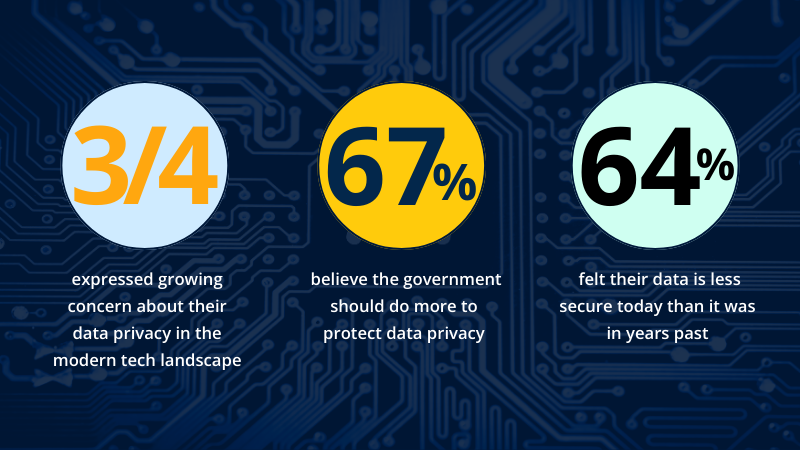
Instead of generic pitches, focus on the specific value proposition for each client. Translate complex AI concepts into tangible business benefits, quantifying ROI and demonstrating how your solution addresses their most pressing challenges. Remember, C-suite executives prioritize business impact, not technical specs.
Transparency and ethics are paramount. Earn their trust by openly addressing data security, privacy, and potential biases. You can share case studies and industry insights showcasing your expertise and commitment to responsible AI development.
Building relationships is key. Network at industry events, engage in thought leadership and become a trusted advisor by offering valuable insights and support beyond the sale.
Remember, successful AI sales aren’t one-size-fits-all. Tailor your solutions, leverage data-driven insights, partner with established players, and offer ongoing support to ensure long-term value and client satisfaction.
The Art of Selling to C-Level Executives in the IT Industry

When you are in the IT B2B industry, chances are you will deal with different types of decision-makers at different levels of management. These people can be IT Managers, CIOs, CTOs, VPs, or CEOs.
If you are lucky enough (pun intended), you might find yourself like a bouncing ball as one decision maker tells you to go to another decision maker. In fact, you might be making the same pitch in front of different high-ranking people in the same company.
Doing the same thing over and over again gets easier in time, but the real challenge is convincing different decision-makers with different values to buy your product or services.
Before you map out a strategy, get to know the different types of IT decision-makers and how to deal with them:
The usual target decision maker
When thinking of decision-makers, top-level executives come to mind. After all, C-suite executives get the the final word in the buying decision. However, they have a lesser role in the buying process than you may expect. If you focus your marketing efforts solely on them, the effectiveness of your approach is limited because:
- C-Suite executives are smaller in number.
- It is expensive and time-consuming to reach them.
- They are busy people and will most likely delegate your marketing to their IT team for analysis.
So what should you do?
Instead of blasting all C-suite executives, focus on building trust with one key decision-maker. Become a trusted advisor by understanding their industry, goals, and challenges. Offer valuable solutions and demonstrate your expertise to influence their buying decision in your favor.
The Do-it-all decision maker
Small IT business owners are IT buyers, but they don’t have the time it takes to review your proposal for consideration. They most likely have a small team that lacks experience in the strategies you are a master at.
You may have the solution to the problems or challenges they face, but they are unwilling to spend time learning about your organization.
So what should you do?
Don’t just talk ROI and long-term plans, focus on immediate pain points. IT business owners need solutions to current problems.
So, be their trusted advisor:
- Understand their business and pain points.
- Skip the sales pitch, focus on education and building trust.
- Position yourself as their go-to expert for solving their problems.
Make it easy to buy and use:
- Offer seamless adoption and support.
- Help them understand the value of your solutions.
- Guide them on reaping maximum benefits and adding features as needed.
- By focusing on their immediate needs and building trust, you’ll win their attention and business.
The Know-It-All decision maker
While business decision makers hold the final say, your B2B marketing efforts shouldn’t overlook the crucial gatekeepers: IT professionals. These individuals meticulously evaluate your proposal alongside competitors’, ultimately influencing the buying decision.
Bypass them at your risk! To succeed, you need to understand their priorities: addressing their specific technical needs, not just marketing fluff. Build trust and showcase how your solution solves their pain points directly. By winning over the IT team, you open the door to the decision maker’s approval and secure a higher chance of closing the deal.
So what should you do?
Reaching key IT decision-makers requires either influencing their superiors or demonstrating superior knowledge. Collaborate with a tech PR expert to publish content that catches the attention of their bosses. Be prepared with impressive solutions when their superiors request further information.
However, the most effective approach lies in understanding their industry and specific business goals. Show them how your solutions directly address their pain points, offering personalized solutions that demonstrate you genuinely care about their needs. Earn their respect by showcasing your knowledge of their problems without any sales pitches or biased solutions. This builds trust and positions you as a valuable partner, increasing your chances of success.
The Art of Selling to C-Level Executives in the Healthcare Industry

Selling to C-level executives in the healthcare industry is like performing a surgery – precise, delicate, and demanding deep expertise. Unlike scalpels, you wield data, insights, and solutions, aiming to give solutions to their pain points and prove your value. So, what should you do?
Their Pain Points:
Healthcare leaders are stressed about keeping costs down while improving care. They’re drowning in data, have trouble finding good staff, and worry about changing rules.
Your Winning Hand:
Show them how your stuff improves patient care and saves money. Use data to prove it! Help them manage their data, hire and keep good staff, and stay on top of the rules.
Building Trust:
These leaders are cautious. Show them you know healthcare and are honest. Back up your claims with data and reports. Be open about your limitations and protect their patient information. Be a team player, not just a salesperson.
Your Winning Strategy:
Make your solution fit their needs perfectly and work well with their existing systems. Show them the real-world benefits of data. Charge is based on the value you deliver, not just how much it costs. Most importantly, be a long-term partner, always there to help and learn.
By understanding their problems, offering helpful solutions that save money and improve care, and being a trustworthy partner, you’ll win their trust and their business. Remember, they need a partner, not just a vendor.
In conclusion
Successfully selling to C-level executives in the B2B industry requires a multifaceted approach. Building trust and credibility through thorough research, tailored communication, and transparent interactions are foundational. Adopting a consultative selling strategy further elevates the process, emphasizing the understanding of each prospect’s unique context, delivering value through personalized content, and cultivating strong relationships with key decision-makers.
These principles apply across industries, as highlighted in the guide’s insights into targeting C-level executives in the AI, IT, and healthcare sectors. By consistently demonstrating expertise, addressing specific pain points, and establishing trust, sales professionals can increase their effectiveness in engaging and closing deals with high-profile executives.


